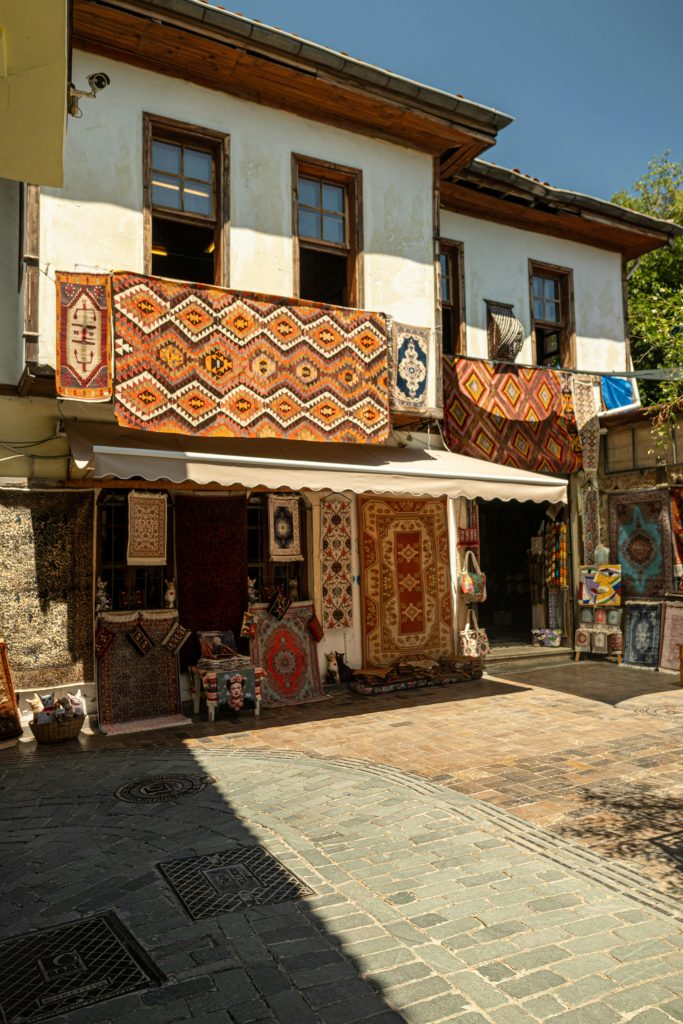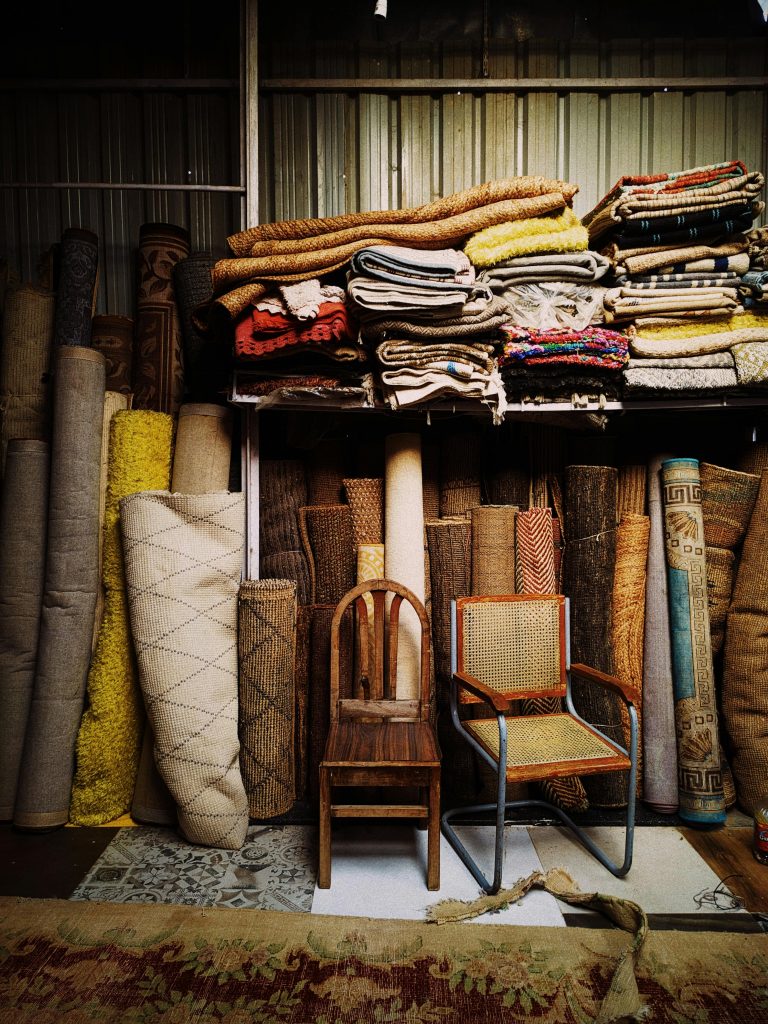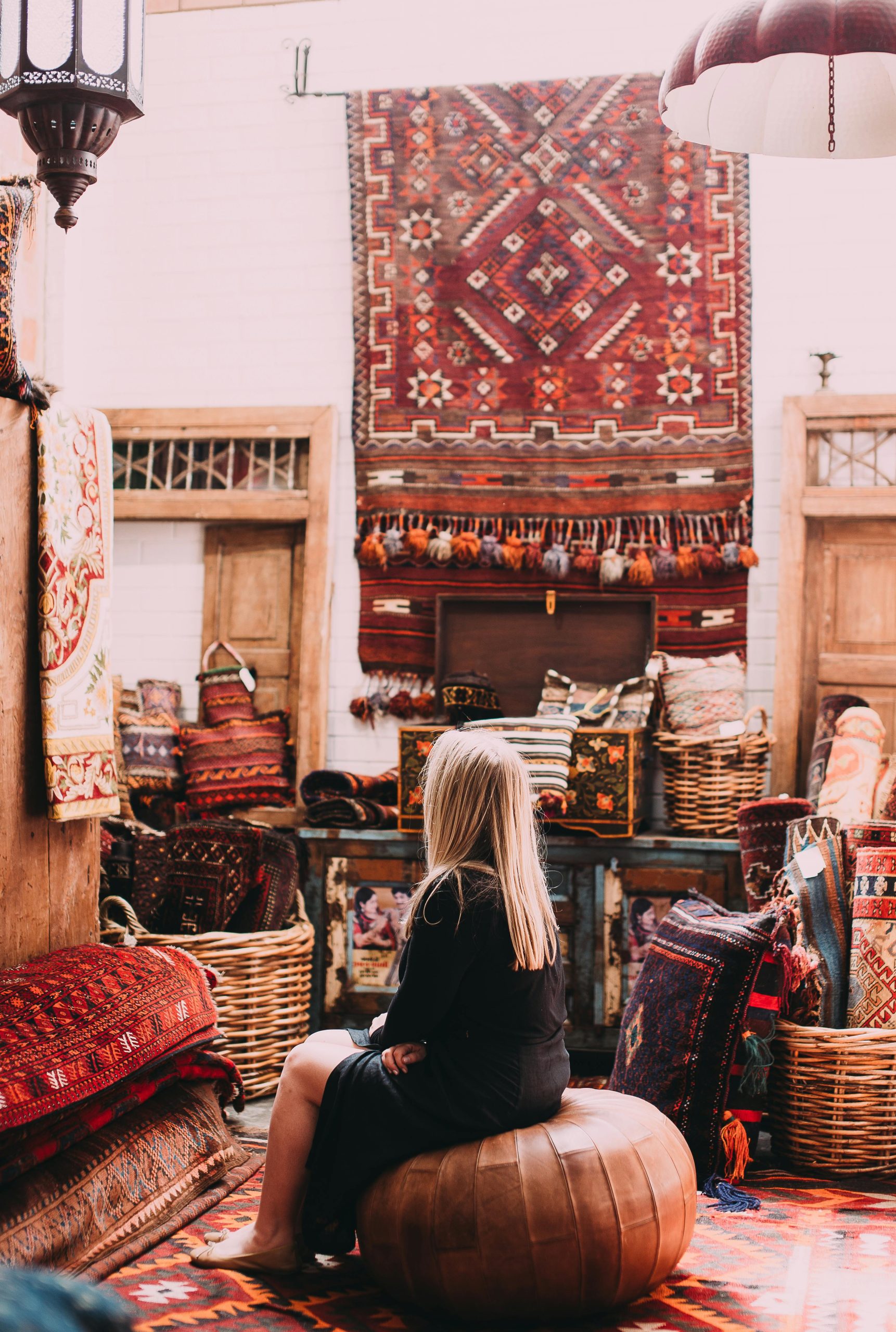As you wonder along the narrow alleys of Essaouira, or Marrakech’s old souk, an eclectic assortment of sensations immediately takes over your senses. The pulsating energy of the brimming market, the enticing spectacles at every junction, and the intoxicating aroma of exotic spices wafting through the air. Amidst this wonderful blend of sights, sounds, and scents, the vibrant display of colorful fabrics and artsy textiles inevitably draws your attention. These aren’t mere throw rugs; The Moroccan Berber Rug, timeless treasures brought forth by a rich fabric of traditions that stretches back centuries.
Hence, Renowned for their vibrant colors and captivating patterns, Berber rugs transcend their utilitarian purpose, transforming into tangible expressions of Berber culture. Each delicately placed thread acts as a silent testament to the artistry and skill shaped by generations of Berber craftspeople.
The Ancient Craftsmanship Behind Moroccan Berber Rugs
Moroccan Berber carpets, also known as Berber rugs, have an extensive cultural heritage that dates back to north Africa’s indigenous Berber people. These carpets, which originated predominantly in Morocco’s Atlas Mountains area, play an important role in Berber customs, traditions, and history, functioning as more then mere utilitarian furniture but also as a symbol of identity, legacy, and artistic expression.
Furthermore, the tradition of Berber rug weaving dates back in time for thousands of years, with some historians suggesting that the craft predates recorded history in the region. The Berber tribes, which inhabit various parts of North Africa including Morocco, Algeria, Tunisia, Libya and Mauritania, have a long history of weaving textiles from natural resources like wool, camel hair, and cotton. Whereas These materials were easily accessible in the rough terrain of the Atlas Mountains, where the Berbers resided and herded their sheep.

A Women-Lead Tradition of Collaboration and Skill
Historically, Berber rugs were handmade by women in the community, an exclusively female expertise, mainly as a part of collaborative efforts to share knowledge and skills among family members and neighbors. Women, traditionally impowered themselves through the art of Berber rug weaving. Additionally, they led this expressive time-consuming tradition, elaborately shearing, washing, carding, spinning, dyeing, and weaving to create vibrant fabrics. Leveraging natural dyes from plants, minerals and insects, they infused each rug with creativity and personal expression.
The different types of Moroccan Berber Rugs
Berber tribes delicately hand weaved Beni Ourain Rugs, above all, praised for their plush texture and minimalist ivory designs adorned with geometric patterns.
Azilal Rugs, crafted in Azilal province, captivate with their vibrant shades and bold geometric motifs, meticulously fashioned from wool and cotton by skilled Barber artisans.
Fashioned by Berber women Boucherouite Rugs showcase and eclectic charm, utilizing recycled materials like fabric scraps and plastic fibers to produce colorful and playful designs.
Kilim rugs, woven by Berber tribes using flay-woven technique, exhibit intricate geometric patterns and striking colors, Hence, making them versatile pieces suitable for various uses.
Hailing from the Middle Atlas region, Hanbel Rugs featuring durable flat-woven bases intricately adorned with geometric motifs in contrasting colors, crafted by skilled artisans.

Trusted Local Berber Rug Cooperatives in Morocco
- 1.The Iklan Berber Women’s Rug Co-op: located in Taznakht, works closely with Ministry of Culture and Artisanal Craft as a part of sustainable development project.
- 2. Moroccan Carpet Cooperative: While the specific details of the location were not provided, This cooperative supports women’s weaving groups across Morocco.
- 3.One Square Meter Berber (OBSM): This initiative collaborates with traditional Moroccan artisans and Dutch designs to adress the challenges facing the Moroccan carpet industry.
- 4. Berbers Market: Although it operates more as a market place then a cooperative. The Berber market, widely recognized for its comprehensive selection of authentic Moroccan rugs. Nevertheless, this includes rugs produced by local cooperatives and artisans, showcasing a broad array of genuine Moroccan craftsmanship.
Practical Tips to Recognize Authentic Berber Rugs
1. Inspect The Materials: materials such as wool, camel hair, and cotton are common examples of organic materials used to make authentic Barber carpets. These fibers give the carpets their unique texture and durability. Above all, be aware of synthetic rugs, which are typically mass-produced imitations.
2. Examine The Weave: Artisans have traditionally passed down the techniques for weaving Berber carpets through generations, thus insuring the preservation of their age-old craftsmanship. Therefore, examine the rug’s weavings for imperfections and variances that are typical of handcrafted artistry such as slight asymmetries, variations in knot density, or minor inconsistencies in the design, reflecting human touch of the artisan. Machin-Made carpets often have a more uniform and consistent weave.
3.Study The Design and Motif: Each Moroccan Berber Rug communicates a tale with its pattern and motifs, which are frequently associated with cultural meaning and symbolism. Hence, familiarize yourself with typical Berber themes like themes like diamonds, zigzag, and ancient Berber symbols that reflect nature of tribal identity.
4.Feel The Texture: In order to determine the authenticity of the quality of the rugs, you should run your hands over the their surface to assess the texture. True Berber rugs offer a luxurious and plush feel, indicative of quality wool, which should be soft, dense, and exhibit a natural sheen. In contrast, imitation rugs made from synthetic fibers often present a rougher, less luxurious texture.
5. Consider the price and source: Be cautious of unusually low prices, specially when shopping in places known for selling mass-produced imitations. Reputable locals, cooperatives, artisan marketplaces, and merchants that specialize in handcrafting carpets are more likely to sell genuine and authentic Berber Rugs.

In conclusion,
Moroccan Berber rugs stand as enduring symbols of tradition, craftsmanship, and cultural heritage. From the bustling souk of Marrakech to the tranquil villages of the Atlas Mountains.







